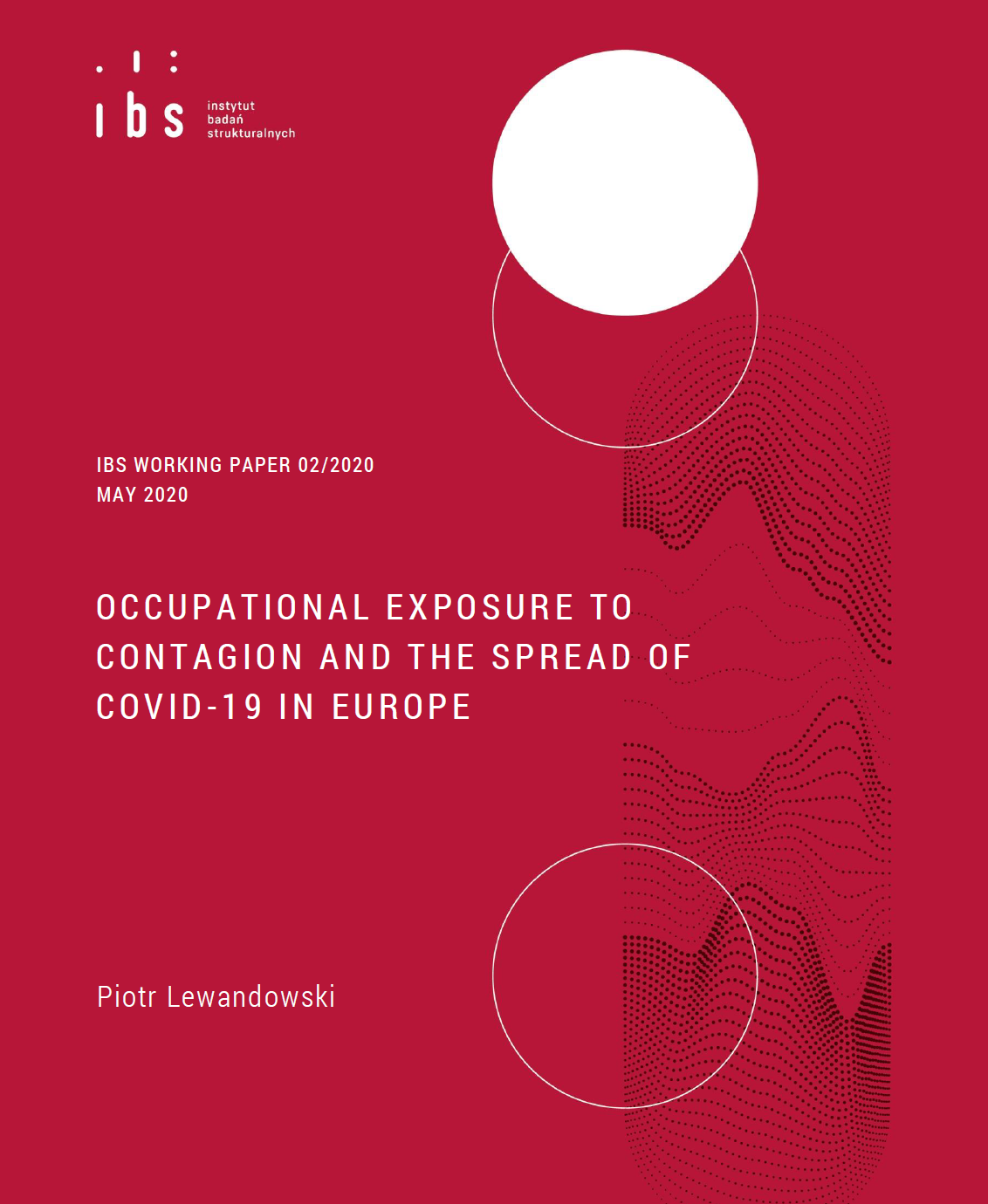Social contacts are a key transmission channel of infectious diseases spread by the respiratory or close-contact route, such as COVID-19. There is no evidence, however, on the question of whether the nature and the organisation of work affect the spread of COVID-19 in different countries. I have developed a methodology to measure country-specific levels of occupational exposure to contagion driven by social contacts. I combined six indicators based on Occupation Information Network (O*NET) and the European Working Condition Survey (EWCS) data. I then applied them to 26 European countries, and found substantial cross-country differences in levels of exposure to contagion in comparable occupations. The resulting country-level measures of levels of exposure to contagion (excluding health professions) predict the growth in COVID-19 cases, and the number of deaths from COVID-19 in the early stage of pandemic (up to four weeks after the 100th case). The relationship between levels of occupational exposure to contagion and the spread of COVID-19 is particularly strong for workers aged 45-64. I found that 20-25% of the cross-country variance in numbers of COVID-19 cases and deaths can be attributed to cross-country differences in levels of occupational exposure to contagion in European countries. My findings are robust to controlling for the stringency of containment policies, such as lockdowns and school closures. They are also driven by country-specific patterns of social contacts at work, rather than by occupational structures. Thus, I conclude that measuring workplace interactions may help to predict the next waves of the COVID-19 pandemic.

I thank Karol Madoń for his excellent research assistance. This paper uses Eurostat data. Eurostat has no responsibility for the results and the conclusions, which are those of the author. The usual disclaimers apply. All errors are our mine.

